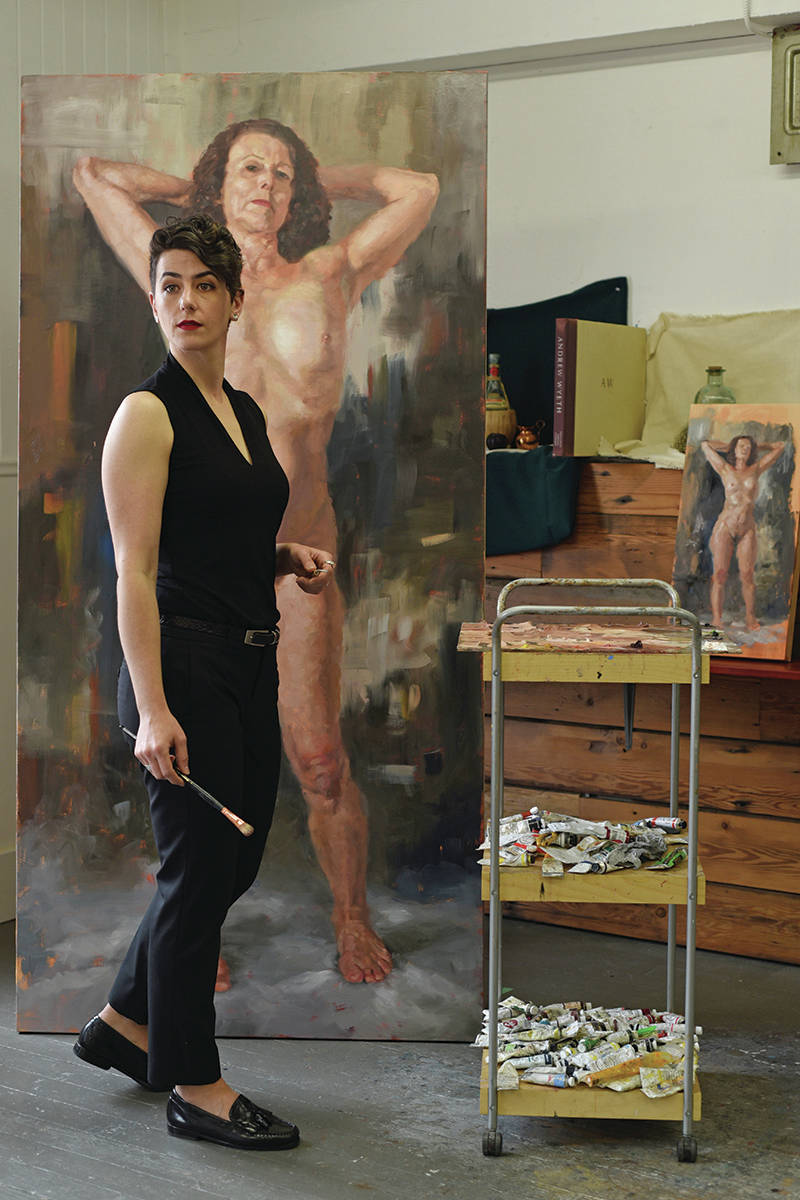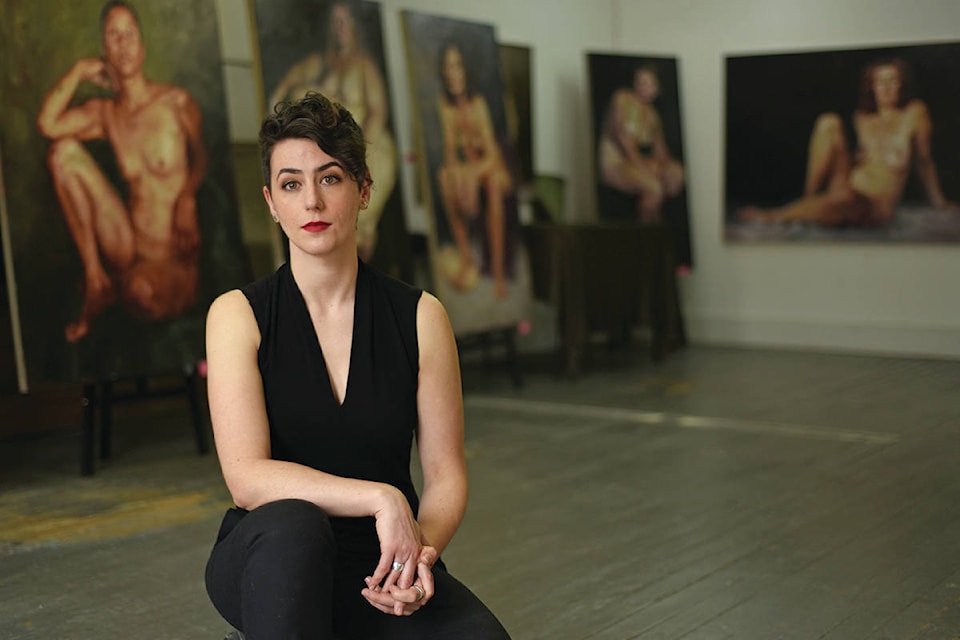- Angela Cowan Story
Story courtesy of Boulevard Magazine, a Black Press Media publication
Like Boulevard Magazine on Facebook and follow them on Instagram
After climbing several sets of narrow stairs and finding myself at the industrial-style door to painter Nicole Sleeth’s Fisgard Street studio — marked only by a small business card — I’m not sure what to expect.
Having been in a few artist studio spaces in Chinatown, I’ve found that they all have their own personalities and quirks.
Nicole opens the door and ushers me in with a warm hello and an easy smile, her dog Poppy running to greet me as well. I decide the space fits her. It’s bright and open, inspiring yet uncluttered, with a dozen or so stunning canvases displayed along one long wall. The painted grey wooden floors and pale walls provide no distraction from her art.
“I love my space,” she says, mentioning she’s only been here a few years. “I feel so fortunate to have found it. The size is incredible. I’ve never had this much space before.”
The larger than life works that line the studio are from her current and ongoing series Gaze, and the women portrayed, who stare out at the world through their painted eyes wearing just their skin, demand a focus unto themselves.
It’s hard to shift my attention back, but Nicole offers me a seat and we start getting to know each other.
Born in Kingston, Ontario, she started painting as a hobby in 1998, and studied in a traditional art atelier fashion with Ottawa artist Bob Grant for eight years before continuing on her own. It wasn’t until 2011, when she was living in Vancouver, that she began painting and teaching full time, after an unexpected but ultimately fortuitous turn in her career.
“I got laid off from my job,” she laughs. She’d been working at an art gallery, and with her newfound freedom, decided to start teaching to help make ends meet while she explored her own art. Within just a few short months of teaching at community centres, word spread and her classes grew large enough that she could move into her own studio.
“It took the pressure off of having to sell my art,” she adds.
Three years later she made the move to Victoria and began offering classes here as well, with great success. Her weekly instruction welcomes everyone, regardless of experience (or lack thereof), and focuses on drawing and painting with a classical approach.
It was also in 2014 that she began her Gaze series after her first workshop at the New York Academy of Art.
“I did a particularly impactful workshop with Alyssa Monks, who is one of my most favourite artists,” says Nicole.
Inspired, she started creating “large scale depictions of nude women who engage and actively challenge the viewer.”
Each canvas stands independently, the women therein relaxing in poses of their own choosing. Their feet are firmly planted beneath them and their gazes turned unflinchingly on the viewer. Some seem to have a hint of defiance, others a calmness. All are grounded and clearly comfortable in their own skin.
“I’m trying to keep it honest and genuine,” she says. “It’s not for the viewer’s benefit.”
| Artist Nicole Sleeth in her studio with a current painting. Don Denton photography |
The series grew from both her passion for realism and a frustration at how women and their bodies are nearly always treated in media and art.
Always a certain body type, a certain age and a certain demographic. Often with faces turned away or with only select body parts highlighted, it all speaks to a focus on giving the viewer the chance to look, and look as long as they want.
“There’s no accountability,” says Nicole. “I just get tired of that, of certain body parts being more valuable than others. As a society, at least in this part of the world, I think we are too comfortable with voicing our approval or disapproval of women, particularly their appearance.”
Nicole’s works step away from that, existing in their own right as honest portrayals of women.
Her work captures the spark of life in her models’ eyes, the textures of their skin, the humanity in their hands.
But step closer, and you also become viscerally aware that they have been intentionally created. Their edges soften into swirls and brushstrokes until it all deconstructs into light and shadow and pigment. That relationship between paint as an inert substance and something that can bring life to a canvas is something that fascinates Nicole. Though she works in realism, she strives to marry that with an awareness that each piece is still something that’s been created.
“Not photographic. Not strictly duplicating reality, but enhancing it,” she says.
Her style and technique have been evolving over the last three years within the Gaze series.
“I am more careful with my first pass, more thoughtful,” she says. “I try to allow some movement too, to allow some edges to soften or disappear, and others to stand out. A huge thing I’ve found is having their feet planted makes the models feel and appear more grounded.”
And while she’s been involved in dozens of shows in the past, and says she’d eventually like to have a show with Gaze, there are no immediate plans for anything formal.
Without the pressure of trying to make all the pieces fit together, “I can have each painting be the best painting it can be,” she says.
In a way, her relationship with the art itself mirrors what she’s depicting in her portraits: no demands, just fluidity and an honest acceptance for what is. She has given agency not only to her models, but to the work itself, and her passion comes shining through again and again right to the end of our conversation.
“I like painting skin, I like painting women’s bodies,” she says, her hands moving as she talks. “I love the way people look. I think it’s fascinating, and I would love to see more curiosity about it. There’s just so much variation.”
“There’s no judgment. This is just a body,” she says. “This is a person.”




